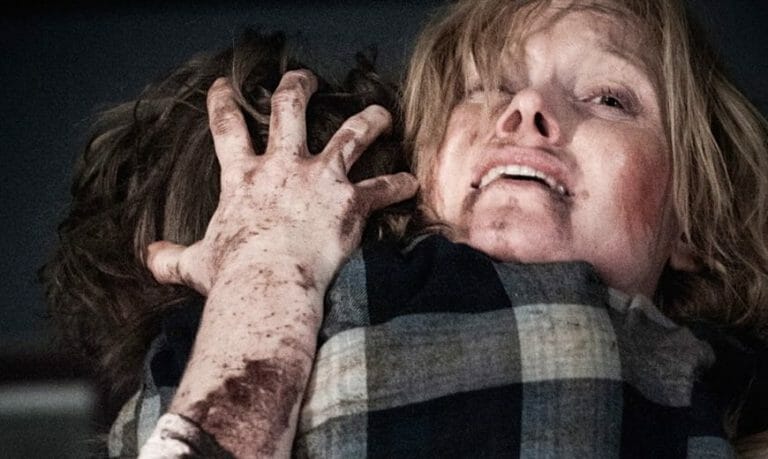The Babadook: How Jennifer Kent Crafted A Great Horror Film
By Eric Owusu · January 8, 2015
Writer and director Jennifer Kent’s psychological horror movie The Babadook has been lauded as the best horror movie of 2014. Rightfully so. I saw it with a group of friends in a secluded cabin. After watching it, I was so disturbed that for the rest of our stay, I was too afraid to use the privy by myself at night. It was only 50 feet away from the cabin.
The movie is terrifying and tense, making me wonder what would happen next as every scene came and went. The more of it I watched however, the more I realized that the monstrous Babadook figure wasn’t nearly as scary as the dynamics of the mother and son’s relationship. Their arguments and fits of rage were disturbing and all too realistic. The threat of the Babadook was a present terror, but the appearance of the Babadook was its scariest when it lent itself to intensifying the dreaded mother/son conflicts that threatened to swallow both of them.
The Babadook is a great example of a dramatic screenplay that coincidentally is a Horror film and does a lot more than frighten audiences with jump scares and gory deaths. It takes a scary situation with realistic people and shows us how they feel about the situation, often blurring the line between protagonist and antagonist.
This movie does several things exceptionally well, like establishing realistic characters and getting us to care about them, their mental states and their actions. I’ve selected a few aspects to suggest emulating for those looking to write a horror screenplay with compelling dynamics.
NOTE: Potential spoilers below
Develop the Relationships
The stressed parent and difficult child. Most people have been either of the two, or have at least seen both. Audiences can feel for characters with captivating relationships that are deeper than the typical horror genre boyfriend/girlfriend or the newly acquainted survivor group relationship. When penning your horror movie screenplay, create characters that get us interested in their lives, feelings and conflicts well before the horror starts.
Delve past the surface to bring scary questions to the forefront of your screenplay’s plot. Write dialogue that has characters saying what interpersonal conflicts they’re having amidst the terror, why they are having them with each other, how they are and aren’t dealing with their conflict and how it’s affecting all the parties involved.
The parent/child relationship itself can be scary. In Wes Craven’s original A Nightmare On Elm Street, our heroine Nancy’s relationship with her mother is tense when mysterious murders take teenagers one by one. Her mother has answers, but tortures her by not divulging them.
Amelia and her son Samuel’s relationship is scary way before Mister Babadook shows up. The child has fits of violence and is disobedient. He’s a textbook nightmare for any parent, let alone an over-worked nurse grieving the loss of her husband and secretly blaming the same problem child for it. Terrorize with reality before and/or while you terrorize with fantastical horror.
Establish the Ever-Present Threat of Death
The entire movie, I was on the edge of my seat. I was even more on edge when The Babdook book was delivered to Amelia’s door with images of her and her family dying. Every scene after that has heightened tension, adding to the scary relationship conflicts between the characters we’re rooting for. Keep threats looming in your horror screenplay. Set up scenes so that the audience thinks a familiar genre scare is coming at them and prove them wrong most of the time.
Have Terror Come From Within
Some great horror movies leave the identity of the killer a mystery. It could be anyone. It’s scary because the killer, the villain, the terror, might be someone we’ve come to know and root for. It’s even scarier when we know that it’s one of our protagonists AND we know their identity.
When the Babadook seemingly inhabits Amelia, her actions become as chilling as the threat of the Babadook. In your screenplay consider making one of your protagonists into an antagonist, or at least making it a possibility that your hero is a monster.
Killer conflicts and dynamics that advance the plot and progress interesting relationships are what keep audiences engaged. When constructing your horror screenplay, make sure the people and conflicts we follow as they endure their terrors are terrifically defined, not terrifyingly hollow.
